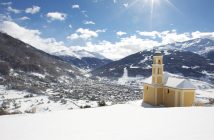Belfast is surprisingly Irish. Now, this may seem an odd thing to say about the capital of Northern Ireland but it’s a city that has come across over the years of Troubles and Peace Process as a place apart. When you visit, though, it’s as full of Guinness and whiskey, Lord of the Dance style dancing and, of course, crack (or craic), that good-humoured chat that the Irish – from whatever side of the border – are so good at.
The Troubles, though, painted Belfast in the darkest of colours and made it a place to avoid. Nowadays, it’s a different city with a new generation who haven’t lived through the Troubles and – in spite of all the dire warnings about the outcome of hard borders – would never want to see them back. Belfast is, in fact, booming with very low unemployment, vast numbers of new businesses (especially IT) and an awful lot of building. Much of that building is for new hotels – they’ll need 30% more beds by 2020 because of all the visitors. Why, do you ask? Well, there are quite a few reasons for that and one of those is that not just business but tourism is starting to boom, too.

This is a small city (the population is around just 300,000) so it’s easy to get around but there’s a lot packed in here to do. Eating and drinking for a start. Belfast is half the size of Manchester but it has two Michelin starred restaurants (Manchester has none). At one of them, Ox, renowned for foods with a local Irish provenance, you can have a three course lunch for just £28. The other starry chef, Michael Deane, has had his Michelin award for 13 years and has grown his empire to a group of seven restaurants.
There are plenty of other very different ways to spend your evenings. You could try Fibber Magees, a spit and sawdust bar where £3.80 buys you a pint of Guinness and Sundays you can have a great lunch/brunch while listening to top Irish traditional bands like The Full Shillin’. Someone might even play Stairway to Heaven on the fiddle as this was where Led Zeppelin first played it in 1971. Filthy McNastys is one of the city’s biggest live entertainment places with live music and DJs and, if it all gets too much, a Secret Beer Garden. Kelly’s Cellars is one of Belfast’s oldest traditional pubs and, along with the music, offers Irish stew. The Crown Bar is a Victorian gin palace with a gleaming tiled interior and “snugs” where you can sit in the same seats as Brad Pitt, Bill Clinton and Harry and Megan. There’s music everywhere in this place, even the Victorian iron and glass St George’s Market, alongside the fresh oysters (£1 each) and fruit and veg.

The Cathedral Quarter is all cobbled streets and very cool. There’s a circus school alongside a museum to local musicians (Van Morrison, Snow Patrol et al) and lots of night clubs. The Friend at Hand is a tiny gem of an Irish whiskey shop – this place glows amber. Its partners are the nearby Duke of York and Dark Horse pubs, as traditional Irish as you’re going to find. They have a huge mural celebrating Belfast’s characters and diversity (you will see an awful lot of George Best portraits in these parts) – and murals are a big part of the city’s past.
I saw many of them on my Black Cab Tour – I asked for not just the pretty bits of Belfast but the ones that were made famous by the Troubles. The thing that strikes you first when you start making your way down the Shankill and Falls Road areas is that all that misery and brutality took place in such a tiny area. It’s easy to spot which side you’re in. There are still loyalist streets festooned with union jack bunting and flags every day of the year. I even saw one pub (the last left in the city apparently) with an outside cage where you were searched before entering in the bad old days. And the murals are everywhere – memorials to paramilitaries from both sides often killed by their own. A long-running disaster that was chilling and pointless in equal measure.

Some disasters, though, can be turned into legend. And so it has turned out with the Titanic. Belfast’s new “Titanic Quarter” has the Titanic Museum at its heart and sits by the docks where the ship was built. This is a great museum and traces the growth of the shipyards in Belfast (I recommend the Shipyard Ride with the voices of the riveters telling their stories), the building and launch of the ship and the stories of the people who were on it. Fascinating.
One of the earliest reasons that Belfast boomed was it was very big in the linen industry – in 1894 the length of yarn produced here amounted to around 644,000,000 miles, a thread that would encircle the earth 25,000 times. Nowadays, there is a “Linen Quarter” in the centre of the city, full of great shops and hotels. I stayed in the newest, the Grand Central, the second of that name. The first built in 1892 was where the Titanic’s launch party was held. It hosted everyone from Churchill to the Beatles until it eventually became an army barracks during the Troubles.

The new Grand Central is on the site of an old linen warehouse and has just opened. There are floor-to-ceiling windows in all its rooms to take advantage of the views and it has a very good restaurant, the Seahorse. It was, in fact, so new that when I was there, its top floor – inevitably its piece de resistance – was still a week away from opening. The Observatory is going to be Ireland’s highest bar (I’m promised the cocktails will be state of the art) and the views are amazing – not just across the city itself but of the countryside beyond. But then, wherever you are in Belfast you’re no more than 15 minutes from those green hills and it’s an easy journey to the Giants’ Causeway, the Mountains of Mourne or even the location of Game of Thrones.
It’s an old city but the odds are good for its becoming Europe’s newest go-to city break destination.
Hastings Hotels (hastingshotels.com, 028 9042 1066) offers rooms at The Grand Central Hotel from £200 based on two people sharing a double room on a B&B basis.




